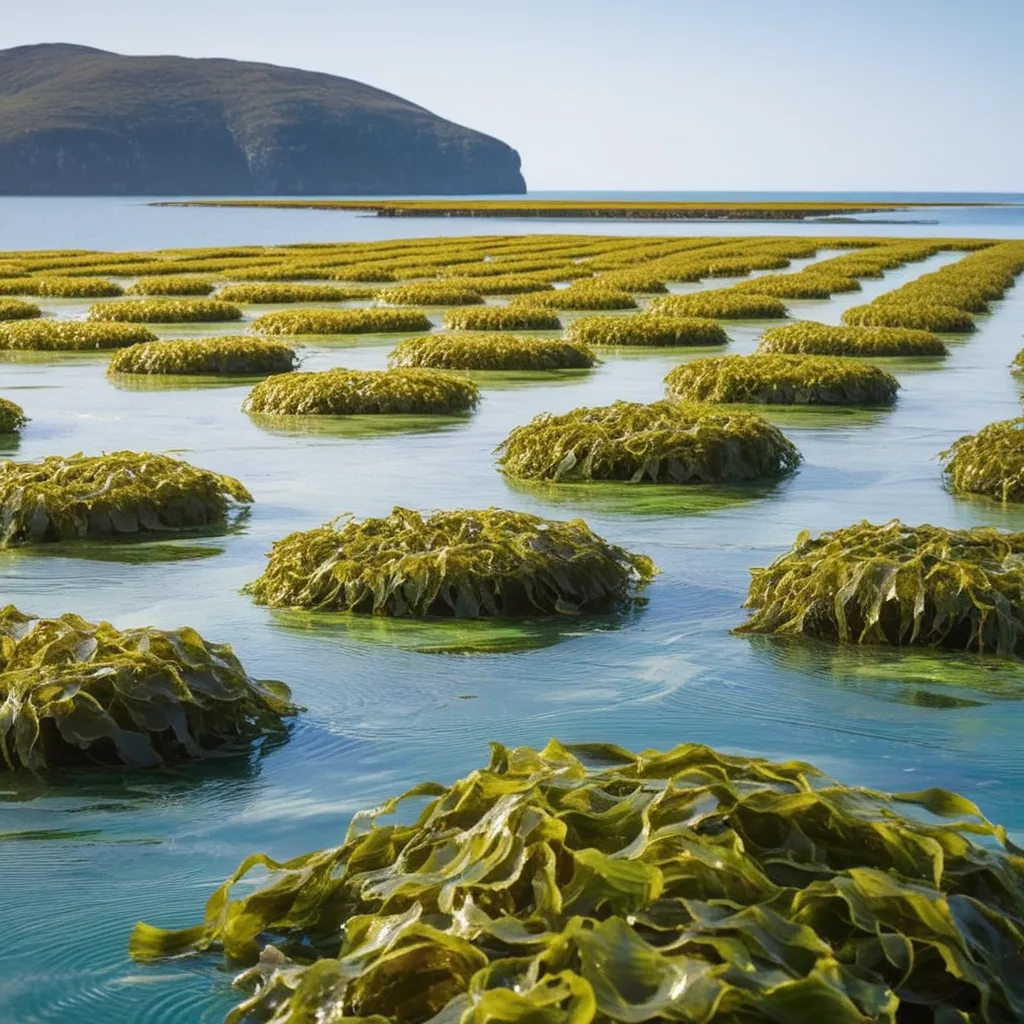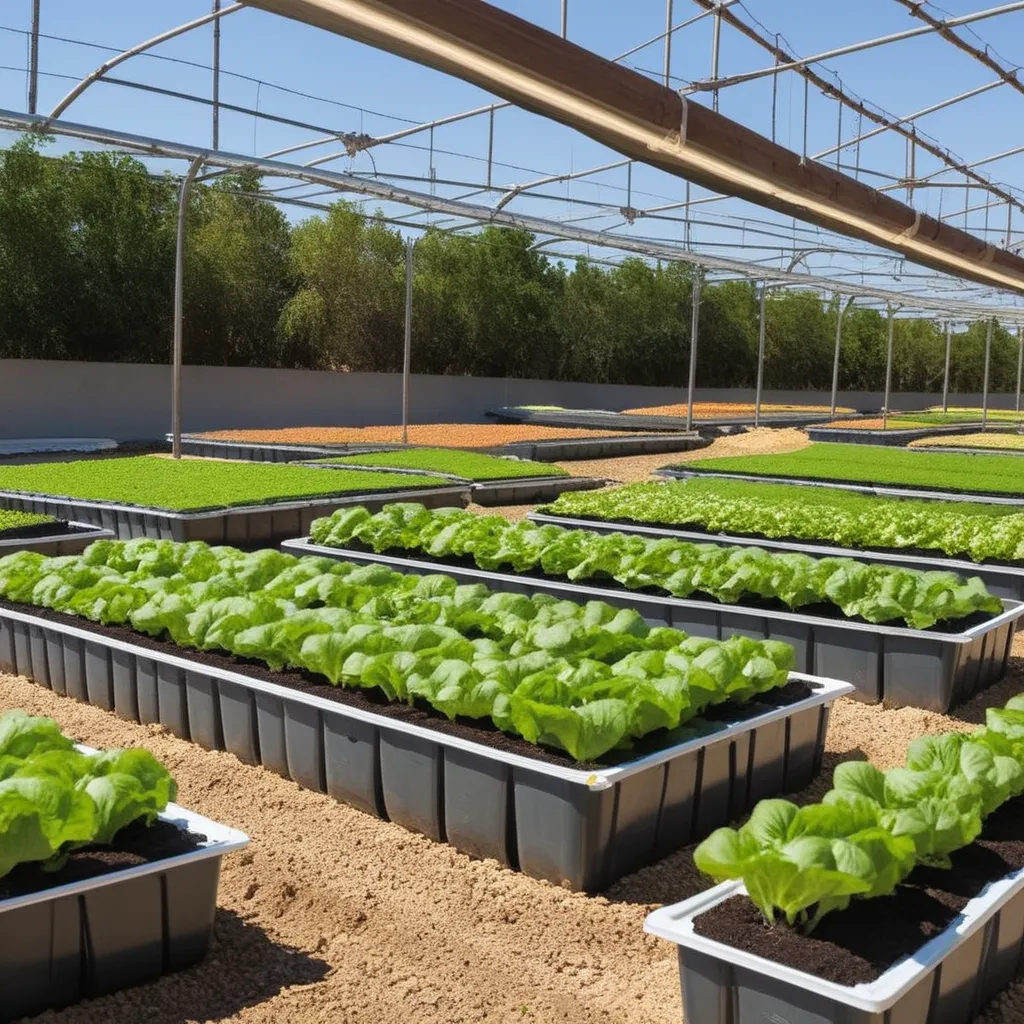AI-Powered Biodomes Revolutionize Urban FarmingIn the heart of our bustling cities, a quiet revolution is taking place—one that promises to change the way we think about agriculture, food production, and sustainability. The advent of AI-powered biodomes is ushering in a new era of urban farming, offering fresh, locally grown produce all year round, and transforming concrete jungles into green oases of productivity and ecological balance.A Growing ConcernGrowing up in the city, I had always been aware of the stark contrast between the towering skyscrapers and the limited green spaces. As much as I loved the urban lifestyle, the disconnection from nature was palpable.The Urban Farming RevolutionUrban farming is not a new concept, but it has faced numerous challenges, including limited space, adverse weather conditions, and the need for significant manual labor. However, recent advancements in AI technology are changing the game, making it possible to cultivate crops efficiently and sus...
Revolution in Agriculture: AI Farms Outperform Traditional Methods

Revolution in Agriculture: AI Farms Outperform Traditional MethodsPicture this: a sprawling field where precision meets productivity, where each plant receives the exact care it needs, and where the future of agriculture is being redefined. Welcome to the world of AI farms, where artificial intelligence is transforming the way we grow our food. As someone who grew up in a family of farmers, this revolutionary shift in agriculture hits close to home.A Farming LegacyMy family has been involved in farming for generations. I have fond memories of spending summers on my grandparents' farm, helping with chores, and witnessing the hard work and dedication it takes to cultivate the land.Traditional Farming ChallengesTraditional farming, while deeply ingrained in our heritage, has its share of challenges, from unpredictable weather patterns to the need for vast amounts of water and labor.A Dream of EfficiencyI often found myself daydreaming about a future where farming could be more efficient, ...
Revolutionary Seaweed Farming Technique Tackles Climate Change

Revolutionary Seaweed Farming Technique Tackles Climate ChangePicture this: an innovative solution that not only combats climate change but also provides a sustainable source of food and biofuel. That's exactly what an exciting breakthrough in seaweed farming promises to deliver. In this article, we'll dive into this game-changing technique, explore its environmental impact, and even share some personal reflections along the way.A Lifelong Love for the SeaFrom my childhood visits to the beach, I've always felt a deep connection to the ocean. Its vastness, beauty, and importance to our planet have captivated me. So, when I heard about a revolutionary seaweed farming technique with the potential to combat climate change, it resonated on a personal level.The Climate Change ChallengeClimate change is one of the most pressing issues of our time, with rising greenhouse gas emissions causing temperatures to soar, oceans to acidify, and extreme weather events to become more frequent. Addressin...
Innovative Urban Farming Techniques Combat Food Insecurity

Innovative Urban Farming Techniques Combat Food InsecurityIn the heart of bustling cities worldwide, a quiet revolution is taking place—one that promises to combat food insecurity and reshape our relationship with agriculture. Innovative urban farming techniques are sprouting up in unexpected places, offering fresh solutions to age-old challenges. In this article, we'll explore the significance of these techniques, the creative ways they're being implemented, and my personal connection to the movement.The Urban Farming RenaissanceGrowing Food Where We LiveUrban farming is a response to the pressing issue of food insecurity in urban areas. As cities grow and expand, access to fresh, nutritious food becomes a challenge for many residents. Urban farming brings the farm to the city, reducing the distance food travels from field to fork.My Personal Connection to Urban FarmingI vividly recall my visit to a rooftop garden in a bustling metropolis. Surrounded by skyscrapers, I marveled at ro...
World's First Floating Agricultural Farms Operational

World's First Floating Agricultural Farms OperationalIn an age where innovation and sustainability are paramount, the world has witnessed a groundbreaking achievement that is sure to leave a lasting impact on the future of agriculture. The inauguration of the world's first operational floating agricultural farms is a testament to human ingenuity, offering solutions to the challenges of food production in the face of climate change and resource scarcity. In this article, we'll dive into the significance of these floating farms, share personal insights that shed light on their importance, and explore the exciting possibilities they bring to the table.A Love for AgricultureFor many, agriculture isn't just a profession; it's a deep-rooted passion.Personal ConnectionGrowing up in a family of farmers, I've always appreciated the value of sustainable and innovative farming practices.The Challenge of Food SecurityAs the global population continues to rise, ensuring food security becomes increa...
Weed Infestation Spreads Across U.S. Farmland as Effectiveness of Chemicals Declines

Crop-damaging Weeds Spread Across U.S. FarmlandCrop-damaging weeds, such as kochia, are spreading across the northern plains and Midwest of the United States, indicating a growing resistance to herbicides. Major companies like Bayer and Corteva are struggling to develop new solutions to combat these resistant weeds.In numerous cases, weeds are evolving resistance to multiple herbicides, posing a significant challenge to farmers. A Reuters investigation, involving interviews with farmers, scientists, weed specialists, and company executives, along with a review of academic papers since 2021, revealed that weeds like kochia, waterhemp, and giant ragweed are overtaking crops in states like North Dakota, Iowa, Wisconsin, and Minnesota due to the declining effectiveness of chemicals.Over the last two decades, chemical companies have reduced their research and development spending, introducing fewer products. This trend, reported by AgbioInvestor, a UK-based firm analyzing the crop protectio...
Nanotechnology in Agriculture: Doubling Crop Yields

Nanotechnology in Agriculture: Doubling Crop YieldsA Tiny Revolution with Big ImpactIn the ever-evolving world of agriculture, a quiet revolution is taking place. It's not tractors or futuristic machinery that's turning heads, but something much smaller and infinitely more intriguing: nanotechnology. This remarkable innovation, which allows us to manipulate matter at the tiniest scale imaginable, is poised to double crop yields and transform the way we feed the world. As someone who has witnessed firsthand the benefits of nanotechnology in farming, I'm thrilled to share its potential with you.A Growing ChallengeFeeding the global population, which is expected to reach nearly 10 billion by 2050, presents an immense challenge. Traditional agricultural methods, while effective, are reaching their limits. That's where nanotechnology steps in.The Power of NanoparticlesAt the heart of this agricultural revolution are nanoparticles—ultra-small particles with unique properties. These tiny wo...
Robotics in Agriculture: Farming of the Future?

Robotics in Agriculture: Farming of the Future?When I was a child, I spent summers at my grandparents' farm. It was a place of hard work, fresh produce, and a deep connection to the land. Fast forward to today, and the world of farming has evolved significantly. With the rise of robotics in agriculture, a new era of farming is dawning, promising increased efficiency, sustainability, and even a touch of science fiction.Childhood Memories on the FarmAs a young city dweller, visiting the farm was always a special adventure. I remember helping my grandparents pick ripe tomatoes, collect eggs from the chickens, and marvel at the towering tractors that seemed like giants to my small eyes. Those summers instilled in me a deep appreciation for the importance of agriculture and the people who work tirelessly to feed the world.Personal Connection: My Grandfather's WisdomMy grandfather, a seasoned farmer, used to tell me, "Farming is about more than just growing crops; it's about caring for the e...
The Future of Food Production: Vertical Farming

The Future of Food Production: Vertical FarmingIn recent years, a new way of growing our food has been sprouting up – quite literally. Vertical farming, once a niche concept, is now at the forefront of the future of food production. As someone who's always been fascinated by sustainable agriculture and innovation, I can't help but be excited about the potential of vertical farming to revolutionize the way we grow and consume our food.What is Vertical Farming?Vertical farming is a method of cultivating crops in stacked layers or vertically inclined surfaces. Unlike traditional agriculture, which relies on vast expanses of land, vertical farms take advantage of unused urban spaces and indoor environments. It's a bit like bringing the countryside into the city.Personal Insight: I live in a bustling city where green spaces are limited. Vertical farming strikes me as a brilliant solution to the challenge of urban agriculture.The Advantages of Going Vertical1. Space EfficiencyVertical farm...
The Evolution of Autonomous Farming Technology

The Evolution of Autonomous Farming TechnologyAs a child, I often visited my grandparents' farm during the summer. Those memories of running through fields, picking fresh vegetables, and chasing chickens are etched in my mind. Fast forward to today, and farming has evolved dramatically, thanks to autonomous farming technology. In this article, we'll explore how these innovations are revolutionizing agriculture.A Walk Down Memory LaneMy grandfather, a seasoned farmer, used to say that farming was both a science and an art. Back then, it was a labor-intensive process. The fields required constant attention, and harvesting was a back-breaking job. I remember how everyone in the family came together during the harvest season, and it was a time of hard work and camaraderie.1. The Traditional Farming MethodsTraditional farming involved manual labor, plowing fields with horses, and planting rows upon rows of crops by hand. It was a livelihood that demanded grit and resilience. My grandfather ...

